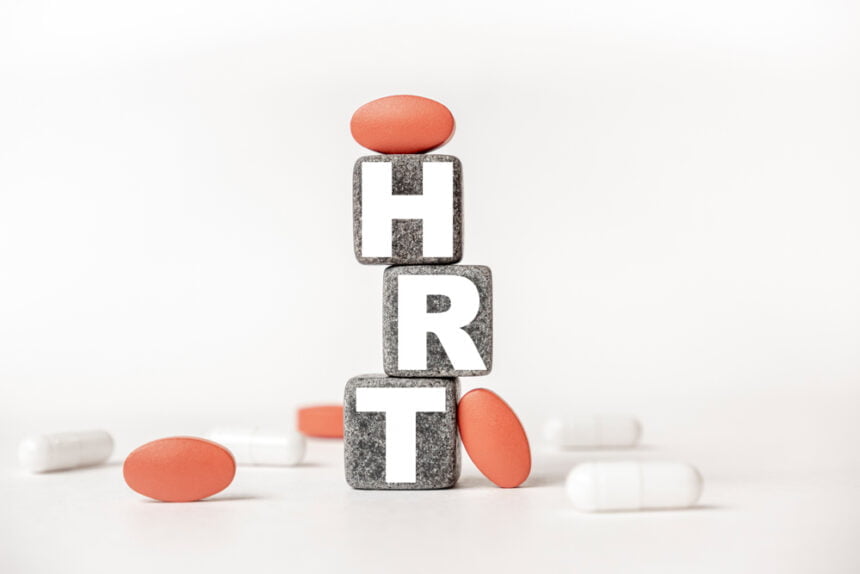Menopause is a reality that all women have to face. Most go through it between the ages of 40 and 58, but some experience it sooner. Women experience menopausal symptoms when their hormone levels start to drop or fluctuate. Weight gain, sleep troubles, hot flashes, and mood swings are some of the effects of varying hormone levels in the body.
Bio-identical hormones and HRT help women with hormone deficiency problems and relieve them from the discomfort of these symptoms. This can be important for many women, especially since we have learned menopause can start sooner than we thought.
Although they are used to treat the same issues, bio-identical hormones, and HRT have significant differences. Before choosing between the two, you must know how they differ and what their benefits are to get the best outcome out of the treatment. There are also benefits of following certain fitness regimens, but many women going through menopause need to take some type of treatment.
So, here’s everything you need to know about bio-identical hormones and HRT. Before moving to the differences, let’s learn the similarities between the two.
How are Bio-Identical Hormones and HRT Similar?
Perimenopause and menopausal symptoms are not pleasant, as most women going through a stage would attest. They can hinder your everyday activities and disrupt the routine flow of your life.
These issues can be diminished by raising or regulating your hormone levels, particularly estrogen and progesterone, so that you can regain balance in your life.
One of the best strategies to handle troublesome symptoms of a disrupted hormone level is hormone replacement treatment.
Traditional hormone replacement treatment (HRT) and bioidentical hormone replacement therapy (BHRT) are two different forms of hormone replacement therapy (HRT) that you can choose.
Both hormone replacement treatments are made up of various hormone dosages and combinations. They are available in many forms, including tablets, creams, gels, and patches. The pellet form of BHRT is injectable under your skin.
Both treatments are recommended for people with extreme symptoms of menopause and menopause. Women who have had a hysterectomy are also good candidates for the treatment.
What is the Difference Between Bio-Identical Hormones and HRT?
The components utilized to make BHRT and HRT are their main distinction, but they are both synthesized in a laboratory.
Chemical Composition of Bio-Identical Hormones and HRT
The chemical makeup of BHRT’s plant sources is similar to that of the hormones humans produces biologically in their body. Bio-identical Hormones are produced from yams, soy, or another natural source.
Diosgenin is chemically extracted from these sources and chemically changed in a lab to produce progesterone. It is subsequently utilized to create bioidentical estrogens and androgens.
Natural progesterone that has been micronized for improved absorption by the body is known as bioidentical progesterone.
On the other hand, products for traditional HRT are created using synthetic hormones and animal sources. Equine estrogens conjugated and taken from pregnant mares’ urine are used to make the estrogen.
In contrast, a synthetic version of progesterone called medroxyprogesterone acetate is used to make progesterone. Although these artificial hormones comprise animal estrogens that are not naturally found in human bodies, they strongly attach to human estrogen receptors.
Impact of BHRT and HRT
Synthetic hormones are not completely compatible with the human body due to the differences in the chemical composition of the hormones. And due to this difference, artificial hormones may not have the same impact on the body as bio-identical hormones from natural sources like plants.
The estrogen component is the same in all HRT. However, they come in different combinations with the opportunity to change the progesterone if necessary. It comes in the forms of estrogen-only and combined therapy, in which estrogen and progesterone are administered to the patient.
Benefits of HRT and BHRT
Evidence shows that hormone replacement treatment lowers the risk of heart disease, osteoporosis, and neurological illnesses, including dementia.
However, women thinking about undergoing any hormone replacement treatment should consult a doctor specializing in bioidentical hormone therapy methods.
Due to BHRT’s inability to have its strength and effectiveness controlled, unlike synthetic substances, no studies compare it to HRT.
Each therapy has a function and can assist in getting rid of symptoms that influence one’s way of life and health. Evidence in some people shows that BHRT helps enhance skin hydration, suppleness, thickness, and even wrinkle reduction.
On the contrary, hot flashes, night sweats, and other mild to severe menopause symptoms can be alleviated by raising hormone levels with HRT. However, this therapy not only helps with symptoms but may also lower your risk for diabetes, tooth loss, and cataracts.
Some additional benefits you can achieve with HRT include doing away with sleepless nights, weight gain, mood swings, decreased interest in sex or discomfort during sex, and memory issues.
Who Should Not Undergo Any Type of HRT?
Women who have undergone breast cancer are commonly not recommended hormone replacement treatment. The treatment may make cancer recurrence more likely in such patience.
According to research, certain types of hormone replacement medication in women with existing health conditions may make them more susceptible to blood clots, strokes, gallbladder problems, heart problems, and breast cancer.
Moreover, it is essential to consult your doctor about potential side effects because they may vary based on your type of hormone treatment and medical history. Some frequent consequences include bloating, acne, weariness, and weight gain, mood changes.
Why are Bio-Identical Hormones More Preferred?
Clinical trials and studies have shown that bioidentical hormones are more effective than synthetic and animal-derived equivalents. They are linked to lesser risks, such as breast cancer and cardiovascular disease.
Moreover, clinical reports have demonstrated that patients who chose bio-identical hormones experienced better outcomes than their synthetic counterparts.
Since synthetic HRT have chemically different structures, they induce distinct effects in the patient undergoing the treatment. Furthermore, estriol differs from estrone, estradiol, and CEE in specific biological aspects.
Progesterone can be used instead of synthetic progestins to prevent their range of harmful cardiovascular effects.
HRT is available only in standard doses, and you cannot alter depending on the person’s needs. They are prepackaged and administered by the pharmacist. Given its natural attributes and ability to customize doses to meet individual needs, BHRT is preferred by many women.
Conclusion
Bioidentical hormones will continue to be the go-to HRT strategy unless there is proof to the contrary. To more precisely define these differences, more randomized controlled studies are required.
The range of impacts bioidentical hormones normally have on cells varies. The distinctions between conventional and bioidentical HRT, as well as the many uses for each, may be properly explained by a healthcare practitioner.







